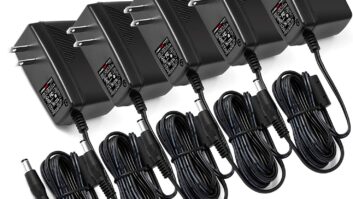
Fig. 1: What to do when a specialized transformer burns? Our Radio World colleague Buc Fitch had a problem. A specialized German transformer had burned in a Grass Valley power supply (see Fig. 1).
Finding a direct replacement was going to take time and be costly. Buc’s solution was to purchase a couple of Radio Shack transformers, brace them with customized mounting brackets as seen in Fig. 2, and return the supply to service.
It’s not the prettiest solution, but it worked until a replacement supply arrived.
* * *
Broadcast engineer Marc Mann was reminded of his high school electronics teacher when he saw our article “Read That Mirrored Scale Correctly,” in the June 6 issue.
His instructor taught him many things (including a cute way to remember the resistor color code) but one of the more memorable was proper use of the mirror scale on meters.
Marc writes that his instructor accepted only one answer on this subject for the weekly test. The question: “What is the phenomenon that causes a technician to misread a voltmeter?”
The answer? Parallax, which our friends at Wikipedia define as “a displacement or difference in the apparent position of an object viewed along two different lines of sight … measured by the angle or semi-angle of inclination between those two lines.”
The mirrored scale effectively eliminates parallax, which is why we find such scales on precision instrument meters like FM power meters and AM RF current meters.
With the advent of the digital meter, however, parallax issues are becoming a thing of the past.

Fig. 2: Use brackets to install replacement transformers until the new power supply arrives.
Let me tell you about a recent experience. At the fall Radio Show, my employer demonstrated transmitters operating into a dummy load. We were loaned a Broadcast Devices directional coupler and remote meter panel. The coupler assembly can be seen in Fig. 3.
At one time or another, I think we’ve all been somewhat suspicious of digitally displayed power metering. I know I was. But imagine my surprise when I turned on the transmitter and the digital front-panel power meter on the transmitter showed exactly what the BDI meter indicated: 500 W right on the nose. Today’s accuracy is amazing.
I know a lot of engineers use these meters. The unique design of eliminating slugs and placing the digital readout right on the directional coupling assembly, as seen in the photo, is probably one of the reasons the company is a past recipient of the Radio World “Cool Stuff” Award.
BDI has expanded its offerings, and you can find out more by heading to radioworld.com/links.
* * *
I had the honor of serving as a judge at this year’s Wisconsin Broadcasters Clinic, with my Elenos associate Mary Ann Seidler as well as Bob Surette of Shively Labs.
The session was titled “What Is It?” and included fun pictures of broadcast equipment and situations. If you’ve never attended the Wisconsin Broadcasters Clinic, make plans to do so next year. There were more than 30 speakers covering a variety of topics for both radio and television.
The next clinic will be held Oct. 8–10, 2013, at the Madison Marriott West Hotel, so mark your calendar. Find more information at www.wi-broadcasters.org.
* * *

Fig. 3: Directional coupler assembly with digital readout visible.
After our session, Art Reis, the chief engineer for Chicago operations at Crawford Broadcasting, made mention of our Styrofoam cup tip in the Oct. 24 issue. You’ll recall the cup can be used as a repository for small screws, nuts and washers when disassembling equipment to keep the hardware from getting lost.
A great idea, but improved upon by Art. He takes those plastic pill bottles with the screw-on caps, and screws the cap into the over-bridge of his workbench. Most pill bottles these days have a reversible cap. One side is child-proof — flip it over and it just screws onto the bottle.
By affixing the bottles this way, the pill bottles can be unscrewed to hold various sizes of hardware as needed. Where Art’s idea differs from the Styrofoam cup is that many broadcaster’s workbench projects drag on for days or longer. A Styrofoam cup filled with hardware can get knocked over, defeating its purpose. Using the securely-fastened bottles ensures that the parts are out of the way, yet nothing gets lost.
Contribute to Workbench. You’ll help your fellow engineers and qualify for SBE recertification credit. Send tips to [email protected].Fax to (603) 472-4944.
John Bisset has spent 43 years in the broadcasting industry and is still learning. He is SBE certified and is a past recipient of the SBE’s Educator of the Year Award. He works for FM transmitter company Elenos USA.












